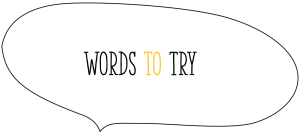26
Reema Faris
 When we examine love, sex, and marriage, we’re looking at key building blocks of a heteronormative patriarchy that in western societies is also typically a white, capitalist system. Whether you treat these phenomena as three separate blocks or as one big block, they have been key instruments in perpetuating the gender binary that has often cast women as “the other” and lesser.
When we examine love, sex, and marriage, we’re looking at key building blocks of a heteronormative patriarchy that in western societies is also typically a white, capitalist system. Whether you treat these phenomena as three separate blocks or as one big block, they have been key instruments in perpetuating the gender binary that has often cast women as “the other” and lesser.
Radical feminists, especially those who were part of the Women’s Liberation Movement (WLM) of the 1960s and 1970s, argued that the root of women’s oppression and the foundation of gender inequality was biological sex difference. They observed that, to secure economic sustenance in this system, women’s role in life was to enhance their value as a female object. To improve their social status, women had to trade on their femininity and sex to make their way in the world because they are denied the resources to be self-sufficient. Feminist scholars, writers, activists, advocates, and change-makers also started to question heterosexuality itself arguing that it is not an innate “natural” sexuality for all humans, but a normative compulsion and imposed standard that is maintained by force. However, despite the inequalities this system has created for women over the centuries, the allure of love and marriage persists. Why?
If we study heterosexuality more closely, especially through the lens of popular culture and media, we can start to see how gender and sexual norms come to be experienced as “natural” and never-changing. Gender and sexual norms acquire power through being repeated over and over in our social contexts and environments, to the point where we begin to experience them as “just the way things are.” Visual signs of heterosexuality in popular media act as “performatives,” which repeat and reinforce heterosexuality as a norm and an ideal. However, heterosexuality is also often pictured as “unhappy” in media representations, and these “unhappy performatives” reveal discomfort with and a reaction against heterosexual norms.

Some of the most frequently repeated performatives around marriage in popular culture are those that represent weddings and brides. Take a television show such as Say Yes to the Dress (SYTTD) for example. It reinforces the essential fantasy of the happy bride, or even just the idea of bride, as key to a woman’s life. It smooths out things like:
- economic disparities — we can accommodate all budgets!
- social disparities — our brides are multi-cultural, multi-ethnic (and often stereotype those cultures and ethnicities in uncomfortable ways)
- inequities for diverse sexualities — look! a trans-bride, a same sex bride (all with incredibly supportive families or parents with economic clout who can pay!)
- body size and disability — we can make a dress work for any woman!
- power inequalities — our brides are independent, successful women (who need all these people to help them make this decision!)
The other thing that shows like SYTTD do is limit the feminist imagination. It drops the horizon for women to one moment and to one event and it disguises the need to look further, to tackle the unfamiliar. When choosing a blush dress over a white one is “oooh trouble” or seen as a “radical” act, the horizon for feminist aspirations has not only been lowered, but it’s also been obscured by tulle, bling, silk, satin, and bows.
If one’s horizon is limited to bride and wife, then it’s less likely that the need to change the world remains as a priority. It’s important to understand and reiterate that it’s perfectly acceptable to be a bride and a wife. It just becomes an issue when that one path through life is represented as every woman’s dream, and as the natural, good, and proper course for her life. That makes all other experiences unnatural, bad, and improper and paints any non-marital path as a path to unhappiness, disorderliness, and destruction.[1]
 Compulsory heterosexuality: the enforcement of heterosexuality as a normative system that entrenches men’s access to women physically, economically, and emotionally
Compulsory heterosexuality: the enforcement of heterosexuality as a normative system that entrenches men’s access to women physically, economically, and emotionally
Performative: an act that through repetition gives power to social and cultural norms and ideals
Women’s Liberation Movement: a term used to describe the feminist political and social movement, primarily the one that was based in the United States, which pursued equal rights for women from the 1960s to the 1970s
- Components of my analysis are based on material Dr. Helen Leung presents in GSWS 100: Sex Talk, a course she offers at Simon Fraser University and for which I’ve worked as a Teaching Assistant. ↵
